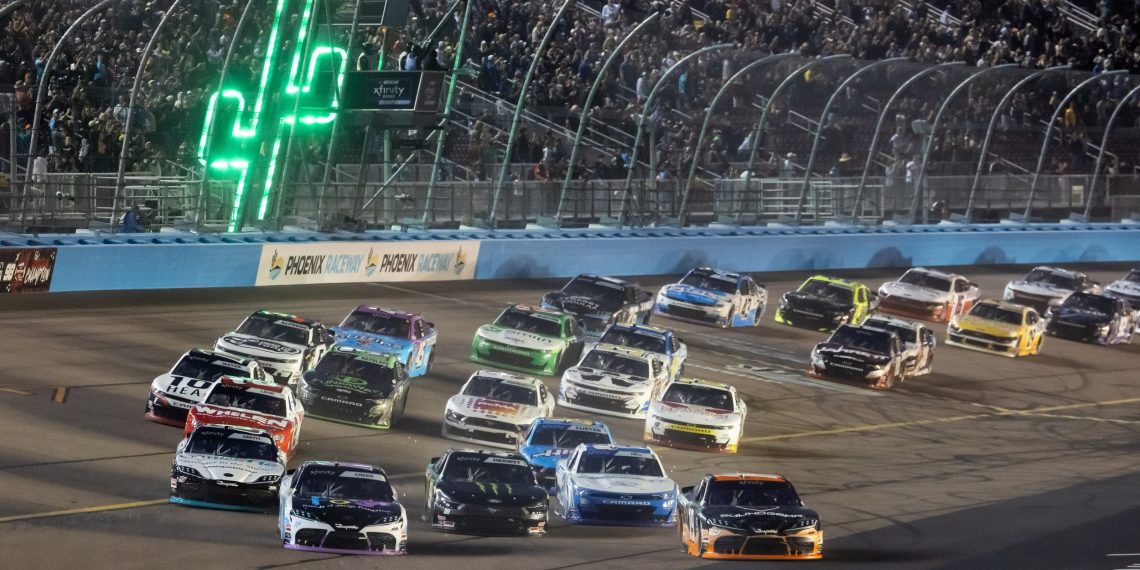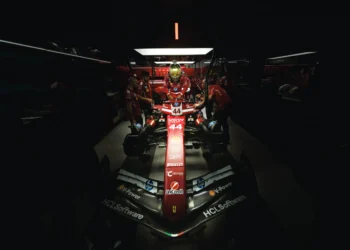NASCAR’s charter system, already a point of contention among teams and fans, has sparked fresh outrage as new rules set to take effect in 2025 appear to heavily favor established giants like Hendrick Motorsports and Joe Gibbs Racing. The revelation that teams will now be limited to owning three charters—with existing four-charter teams grandfathered in—has left the motorsports world buzzing with accusations of unfairness and favoritism.
The New Charter Rule Explained
NASCAR Insider Bob Pockrass broke the news, clarifying the details of the new rule on social media. Starting in 2025, teams will be capped at three charters unless they already operate four. Under this agreement, Hendrick Motorsports and Joe Gibbs Racing will retain their four-charter advantage, while others like Trackhouse Racing and 23XI Racing, which have expressed intentions to expand, will be limited to three.
Pockrass explained that while these teams can run a fourth car as an open entry, it comes without the financial security that a charter provides. Open cars are not guaranteed starting spots or the revenue-sharing benefits charters afford, making expansion riskier and more expensive.
“Yes, teams that weren’t four-chartered previously are limited to three charters under the new agreement. They can run a fourth car as an open,” Pockrass wrote.
Fan Backlash and Perceived Favoritism
Fans quickly took to social media to express their frustration, accusing NASCAR of prioritizing its legacy teams over fostering a level playing field. The decision to grandfather four-charter teams has particularly stoked anger, with many calling it a “blatant advantage” for Hendrick and Gibbs.
Critics argue that the rule hinders smaller teams and up-and-comers like Trackhouse Racing and 23XI Racing, both of which have demonstrated rapid growth and competitiveness. These organizations now face significant barriers to expanding their operations, limiting their ability to attract sponsors and compete financially with the powerhouses.
The Financial Reality of Four-Car Operations
Operating four cars has long been considered the most financially sustainable model in NASCAR. It allows teams to spread costs, streamline logistics, and negotiate more lucrative sponsorship packages. By limiting charters to three per team, NASCAR is effectively cutting off this opportunity for emerging organizations.
“Running three cars is just not as efficient,” said a team executive anonymously. “Four cars allow you to maximize resources, and that’s why Hendrick and Gibbs are where they are. This new rule just cements their dominance.”
Implications for Teams Like Trackhouse and 23XI
The impact on teams like Trackhouse Racing and 23XI Racing could be significant. Both have publicly expressed ambitions to expand to four cars in the near future, but the new charter cap forces them to reconsider their plans.
Without the financial backing that comes with a charter, running a fourth car as an open entry introduces substantial risk. This limitation could discourage investment and hinder their growth, putting them at a disadvantage against legacy teams.
A Brewing Legal Storm
This rule change comes amidst NASCAR’s ongoing legal battle with 23XI Racing and Front Row Motorsports over the charter system. Both teams have accused NASCAR of anti-competitive practices, and this latest development may only fuel their case.
The new rule raises questions about NASCAR’s commitment to fostering competition and inclusivity within the sport. Critics argue that it sends a message that success is reserved for a select few, while newer teams face insurmountable hurdles.
Can NASCAR Regain Trust?
NASCAR’s charter system was initially designed to ensure financial stability and long-term viability for teams. However, the latest changes have cast doubt on the system’s fairness. As the 2025 season approaches, NASCAR faces mounting pressure to address these concerns and reassure fans and teams alike that the playing field remains competitive.
Whether this backlash will lead to further amendments or intensify the legal battles remains to be seen, but one thing is certain: the controversy surrounding NASCAR’s charter system is far from over.










